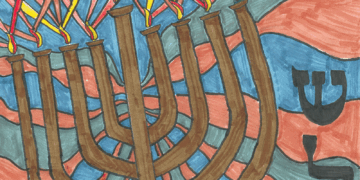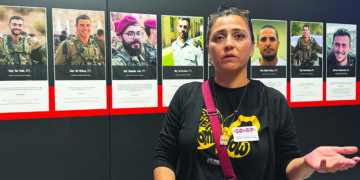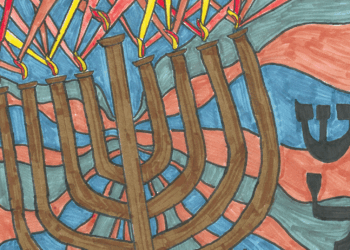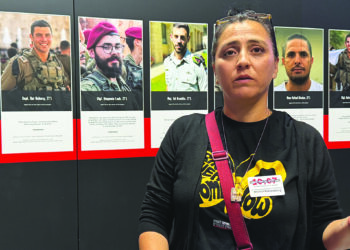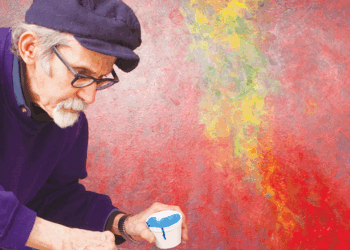Reviewed by NEAL GENDLER
Three weeks short of 17, orphaned Peter Fleischmann escaped Nazi Germany with the famed Kindertransport only to be confined by barbed wire in Britain.
Fleischmann, an aspiring artist, was one of 73,000 Germans and Austrians living in Britain when World War II began. He would be among 27,000 interned by July 1940 as “enemy aliens” in a burst of hysteria: Among refugees from Nazidom — 80 percent of them Jews — might lurk spies.
Haven’t heard of this?
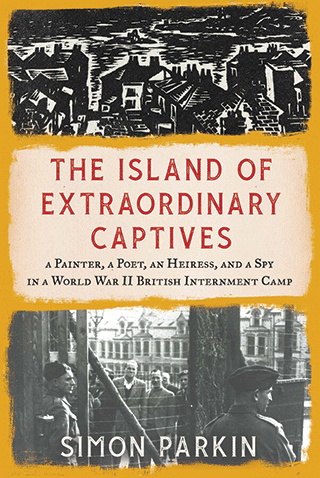 Not Britain’s finest moment, it’s fascinatingly brought to light by the prodigious research — 43 pages of tiny source notes — and smooth writing of British journalist and author Simon Parkin.
Not Britain’s finest moment, it’s fascinatingly brought to light by the prodigious research — 43 pages of tiny source notes — and smooth writing of British journalist and author Simon Parkin.
The Island of Extraordinary Captives, with photos, a sketch of the camp and an index, tells this story in 348 pages focused on Hutchinson, one of 10 internment camps on the Isle of Man. There, Peter was among 1,200 men, “predominantly refugees from Nazi Germany who had been living peacefully in Britain,” bunched by 30s into sparsely furnished, 10-person summer-resort rowhouses, Parkin writes.
Peter was among the oldest of 10,000 Jewish children brought to Britain from Germany and Austria in 1938. After a brief stay with an unwelcoming uncle in Manchester, he lived with an employer until arrested July 5, 1940.
After a miserable week with 2,000 men in a filthy abandoned factory — where British officers and soldiers stole their valuables — he was sent to Hutchinson.
Fellow intern Klaus Hinrichsen, 28, an art librarian featured prominently, called Hutchinson “perhaps the most extraordinary set of captives ever assembled.” The captive comprised leading European artists, actors and directors, professors, writers, journalists, doctors and surgeons, musicians and fashion designers.
Spies? Spies try to fit in. These were “boys in their uniforms, the limping elderly, the well-dressed businessmen, the ruffle-haired intelligensia, the religious men wearing skullcaps or fur hats in midsummer,” speaking accented English.
This highbrow holding pen was run gently by a British captain who encouraged creation of an inmate-run cultural department for lectures, English classes, Jewish cultural programming, musical performances, chess, bridge, boxing and gymnastics — the idea of Bruno Ahrends, once director of the Association of German Architects. The captain called it Hutchinson University.
“Here was an opportunity to learn from some of the best-regarded scholars in Europe,” Parkin writes. The week Peter arrived, 40 lectures were scheduled. A technical school, teaching skills useful in the war effort and beyond, was created by a self-important internee of questionable background.
But “all the frenetic organization and schedule making masked, for many, a seething sense of fear, betrayal, hurt and anger,” Parkin writes. It was absurd to be confined in fear they’d aid their former persecutors. We do learn how one Hutchinson internee was found to be a failed spy.
Neither starved nor abused, prisoners putted golf balls, swam at the beach, took island walks under guard. But lives were put on hold, and families were left without income.
Peter, however, thrived. After “a life filled with loss, abandonment and sorrow,” Parkin writes, “he had at last found his people” in Hutchinson’s community of mentoring artists, particularly famed Dadaist Kurt Schwitters.
Three waves of releases diminished the camp population, taking with it cultural activities and leaving remaining men increasingly despondent, Parkin writes.
Peter’s release application was refused for a reason like “Catch 22.” His documents had disappeared, so “his application for release could not be processed because there was no record of his ever being interned.”
Soon he was offered an out: enlist. He refused, saying he’d enlist voluntarily but not under “sheer blackmail.”
After 14 months and 25 days at Hutchinson, Peter was released Oct. 7, 1941, thanks to an artists’ advocate placing him with an art school. Drafted 16 months later, he interrogated captured Germans.
Postwar, as Peter Midgley, he had a successful art and teaching career.
“Viewed kindly, Hutchinson had been a world of unparalleled opportunity,” Parkin writes. “In no other circumstances before or since have the university don, the local butcher, the celebrated Dadaist, the lawmaker, the baker and the couture dressmaker been forced to cohabitate and, in doing so, enrich each other’s lives.
“Outside, looking in, the camp represented only a colossal waste of personnel and resources, a squandering of talent and manpower, the embodiment of a panic measure born of historical ignorance and bedrock xenophobia.”
And tragedy: At least 45 men died in Isle of Man camps, a few by suicide. In July 1940, Germans sank a ship carrying internees to Canada, killing about 800.
In October 1942, Germans sank a ship returning freed internees from Australia, killing all 362 passengers, among them Ulrich Alexander Boschwitz, 27, promising author of The Passenger (AJW, April 2021) and cousin of Minnesota’s former U.S. Sen. Rudy Boschwitz.
Not all Britons shared in the hysteria. Parkin tells of intense work, especially of a committee led by Bertha Bracey, to get Jews out of Germany — no easy task — and into a Britain unenthusiastic about receiving them.
A postscript deals with the effects of the internment and what some did after the war.
But don’t quit yet: Parkin’s afterword unveils what Peter Fleischmann didn’t know about himself.
***
Neal Gendler is a Minneaplis writer and editor.
(American Jewish World, Dec.2022)


